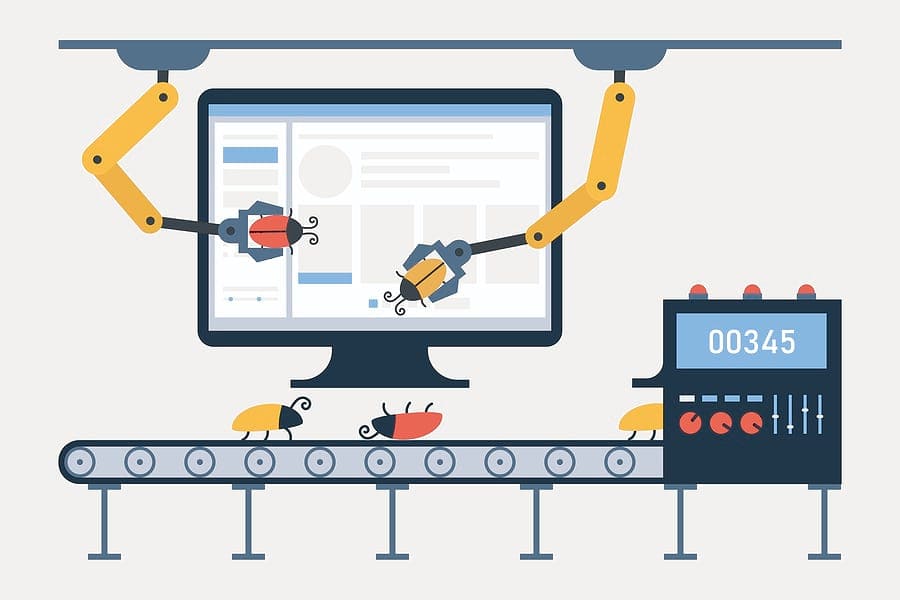Most companies understand that test automation is necessary to speed the delivery of good quality software to meet the needs of their customers.
Table of Contents
ToggleWhen done correctly, test automation can boost productivity significantly. However, there are a number of challenges teams face when they embark on the path to test automation.
Here are some of the key challenges that most organizations:
Effective communication/collaboration
Effective communication among teams is always a challenge, and it is even more so for test automation teams because it requires more foresight, planning, and collaboration.
For companies to get the most out of their automation investment, test members have to ensure that they identify their test automation goals from the outset and set targets to meet those objectives.
The most important line of communication to build is between testers and developers. It is critical that the development team understands the basic working of the automation tool to ensure the application lends itself to automation. Developers love to use the latest and greatest code libraries, but there is often a delay before automation tools support these. By communicating with the development team you can ensure that you aren’t forced back to manual testing because development introduced unsupported technology.
Test Automation: Choosing the right tool
For test automation to succeed, teams have to select the right tools. Because there are so many automation tools on the market, from open source to commercial options, it can be challenging to identify the right ones as most tools are geared to specific applications and platforms.
Consequently, testing teams will have to research the various tools as well as consider their budgets before choosing one over another. It’s not a good idea to select a popular commercial tool just because others in the industry are doing so.
Rather, teams need to first define their requirements for the tools based on the applications under test. They should also look to information from experts who have had experience using the tools under consideration. The teams’ testing strategies and techniques won’t be successful if the tools they select aren’t compatible with their business and technical requirements.
Identifying what to automate
Not all testing processes are good candidates for automation. In identifying which tests should be automated, it’s critical for test automation teams to work out strategies with the people that best understand the application. The automation team should seek input from developers, technical architects, business analysts, project managers, manual testers, and maybe even a small group of customers.
Selecting the best testing approach
It’s not enough for test automation engineers to just select the right tools to write scripts. In fact, one of the biggest challenges that testers face is selecting the right testing approach.
As such, they should deal with this issue before they decide which new test automation tools to purchase. Even though organizations might purchase top-notch tools, they still have to determine which tests they should automate first, which they should keep as manual tests, and how they’re going to do decide between the two. As good as the tools might be, they won’t offer insight into what tests teams should automate.
To decide the best approach, testers should determine:
- How they can reduce the effort it takes to implement and maintain test scripts and test suites.
- What the lifecycle of the automation test suites will be.
- How they’ll generate test reports and metrics.
Test Automation: Large capital investment
In almost every case, the initial phase of implementing test automation is costly as teams have to analyze, design, and select or build an automation framework, reusable functions, or libraries.
There may be licensing, learning, training, and maintenance costs, as well as the costs of setting up devices associated with these frameworks, in addition to the usual operational costs. Test automation means creating a culture of collaboration and for companies just beginning their journeys that may mean spending money on collaboration and messaging tools.

And let’s not forget training. When budgeting for a tool, make sure you include the cost of training. Training will decrease the time to ROI, lower the TCO, and help ensure a successful automation initiative.
When done right, the effort and costs associated with test automation can help companies realize large monetary payoffs as well as deliver significant gains in accuracy, quality, and productivity.
Finding people with the right skills
Just as automation needs the right tools to operate, the tools need people with the right skills to operate them. Organizations just can’t assume that any manual or technical testers can use automation tools.
Typically, test automation tools are only effective when operated by people who are able to accurately design and maintain automation frameworks and test scripts, build solutions and resolve any technical issues.

Because automation frameworks are different when it comes to features and operability, these individuals should understand the design and implementation protocols of these frameworks.
A test automation team should consist of at least one automation architect and multiple automation engineers who work under this individual. The number of automation engineers on the team will depend on the number and size of an organization’s products.
Test Automation: Conclusion
While these aren’t the only challenges associated with test automation, they are some of the most common. Test automation frameworks can bring testing teams plenty of benefits, but only as long as they know how to efficiently manage the challenges. When used correctly, automation can boost the productivity and enhance the quality of your products.
Summary:
Challenges Organizations Face with Test Automation
When done correctly, test automation can boost productivity significantly. However, there are a number of challenges teams face when they embark on the path to test automation. Here are some of the key challenges that most organizations: Effective communication/collaboration. Choosing the right tool. Identifying what to automate. Selecting the best testing approach. Large capital investment. Finding people with the right skills. While these aren’t the only challenges associated with test automation, they are some of the most common. Test automation frameworks can bring testing teams plenty of benefits, but only as long as they know how to efficiently manage the challenges.





